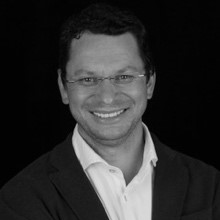Ceramic Materials in Oral Applications
A special issue of Ceramics (ISSN 2571-6131).
Deadline for manuscript submissions: closed (31 December 2023) | Viewed by 15851
Special Issue Editors
2. Center for Innovation and Research in Oral Sciences (CIROS), Faculty of Medicine, University of Coimbra, 3000-075 Coimbra, Portugal
Interests: biomaterials; endodontics filers; endodontics; regenerative tissue; apexification; apical papilla; stem cells; calcium-silicate-based cements; cyclic fatigue resistance; dental materials; modified adhesives; bioactive materials; dental composites; mineral trioxide aggregate; nanotechnology; regenerative endodontics procedures; revascularization/revitalization
Special Issues, Collections and Topics in MDPI journals
Interests: bioceramics; hydraulic silicate cements; material characterization; endodontic materials; clinical application of dental materials; standardization of in vitro testing; clinical protocols
2. Faculty of Medicine, Institute of Endodontics, University of Coimbra, 3000-075 Coimbra, Portugal
Interests: endodontics; tooth discoloration; biomaterials in endodontics; dental adhesion; Minimally invasive Endodontics
Special Issue Information
Dear Colleagues,
We are pleased to invite you to submit manuscripts to a Special Issue dedicated to one of the current hot topics in dentistry worldwide: “Ceramic Materials in Oral Applications”.
Contemporary dentistry largely involves the clinical application of ceramic materials. The evolution of these materials within oral medicine has been remarkable, as new techniques are steadily being introduced and materials constantly developing. This Special Issue focuses on the wide span of clinical applications of these unique materials.
Covered topics include, but are not limited to, the following ceramic materials applications: prosthetic rehabilitation; zirconia implants; bone regeneration; tissue-engineering scaffolds; regenerative endodontic procedures; apexification; vital pulp therapy; root-end filling; perforation repair; orthodontics; and materials’ characterization and development.
Innovative original research articles, case reports, and reviews are welcome, with translational research being highly encouraged.
We look forward to receiving your submissions.
Prof. Dr. Paulo J. Palma
Dr. Josette Camilleri
Dr. Joana A. Marques
Guest Editors
Manuscript Submission Information
Manuscripts should be submitted online at www.mdpi.com by registering and logging in to this website. Once you are registered, click here to go to the submission form. Manuscripts can be submitted until the deadline. All submissions that pass pre-check are peer-reviewed. Accepted papers will be published continuously in the journal (as soon as accepted) and will be listed together on the special issue website. Research articles, review articles as well as short communications are invited. For planned papers, a title and short abstract (about 100 words) can be sent to the Editorial Office for announcement on this website.
Submitted manuscripts should not have been published previously, nor be under consideration for publication elsewhere (except conference proceedings papers). All manuscripts are thoroughly refereed through a single-blind peer-review process. A guide for authors and other relevant information for submission of manuscripts is available on the Instructions for Authors page. Ceramics is an international peer-reviewed open access quarterly journal published by MDPI.
Please visit the Instructions for Authors page before submitting a manuscript. The Article Processing Charge (APC) for publication in this open access journal is 1600 CHF (Swiss Francs). Submitted papers should be well formatted and use good English. Authors may use MDPI's English editing service prior to publication or during author revisions.
Keywords
- ceramics
- prosthetic rehabilitation
- fixed prosthodontics
- glass ceramics
- metal oxide ceramics
- CAD/CAM
- implantology
- zirconia implants
- endodontics
- bioceramics
- regenerative endodontic procedures
- apexification
- vital pulp therapy
- root-end filling
- apical surgery
- perforation repair
- ceramic bracket
- physicochemical properties
- mechanical properties
- characterization techniques







